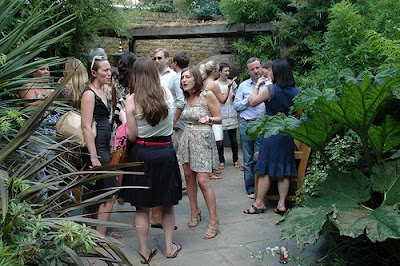Why? That’s one of life’s great mysteries, like lumpy peanut butter, or Sandra Bullock. If you don’t like oysters, you should probably avoid reading on. And frankly, what are you reading a food blog for if you don’t like oysters?
I had good memories and high expectations of Whitstable. While training to be a teacher in Canterbury, I used to visit on spare days, swim in the sea, drink Guinness and eat oysters. That I’m now a journalist should tell you all you need to know about my success as a teacher, but Whitstable stuck with me.
For those of us that were brought up to believe you should only eat oysters when there’s an ‘r’ in the month, it comes as a bit of a surprise to find the oyster festival taking place in July. There is a fairly obvious advantage though: weather. On a late Sunday in July, it was beautiful.
We headed for the beach and the festival, but not before popping in at Wheelers to pick up half a dozen rock oysters. Wheelers is one of my favourite shops in England, so go. Its oysters, whelks, winkles, crabs and prawns are always delicious, and reasonable to boot. Our half dozen cost £3.50, which is really not bad.
Then on to the festival proper, complete with crowds, beer and Mackenzie Crook from The Office (a visitor, not an attraction). As well as seafood, there were stalls selling fruit, vegetables, trinkets, tat, booze, burgers, curry and the rest. It was a veritable greedy man’s paradise.
I won’t go through all the stalls. That would be boring (and impossible, given my slapdash approach to note taking). A couple of highlights though: the beer from Gadds (pictured) was spectacular, all bitter caramel and slightly plummy; the cherries and strawberries from four or five different stalls were great, as they should be at this time of year; and the various oyster sellers did their best.
Oddly, the oysters we ate, while fine, were really nothing special. The prized Whitstable natives were few and far between. Rock oysters were the norm, and are all well and good, especially when they’re abundant and cheap, but they’re hardly sophisticated. I eat mine with Tabasco, or sometimes lemon and black pepper, if you’re interested. At least there was no danger of catching an STD.
In the end though, it didn’t matter that the oysters were a bit of a disappointment. I swam in the sea, I bathed in the sun, I ate and drank well, and I saw old men singing sea shanties.
There was also the oyster eating competition. To my great annoyance, I arrived too late to register, but the sight of intrepid munchers guzzling half a dozen oysters and necking half a pint of stout in the fastest time possible is one to warm any cockles, if you’ll pardon the pun. I intend to take part next year.





